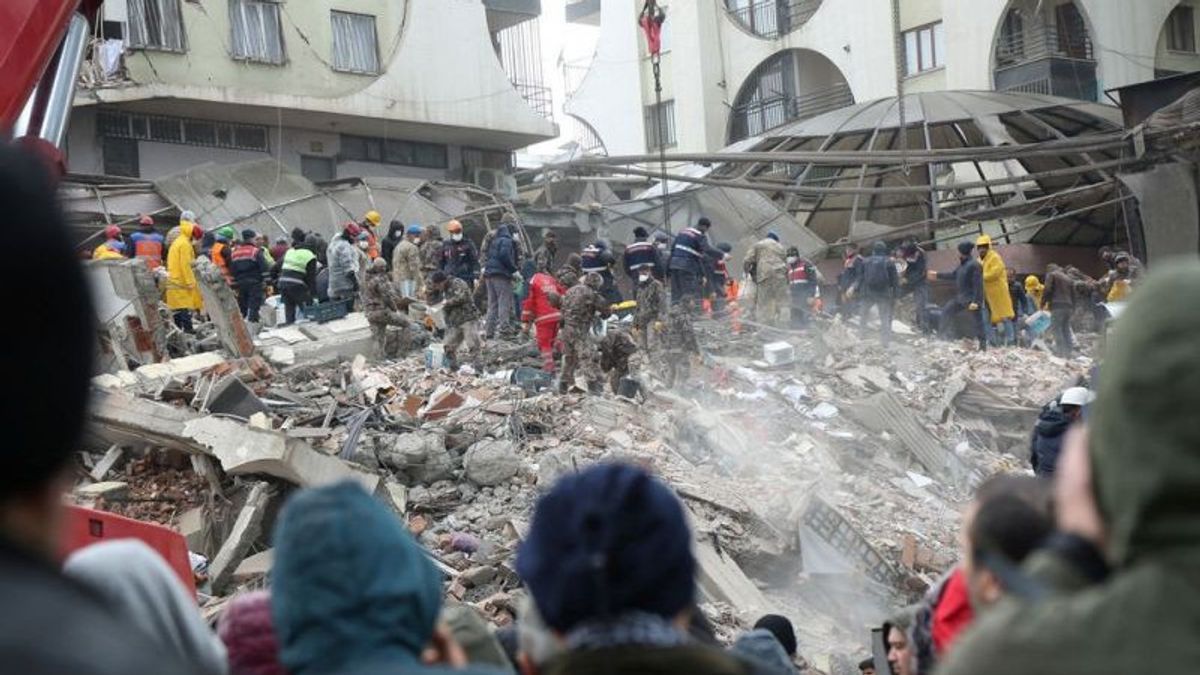YOGYAKARTA The Turkish and Syrian earthquakes have drawn the world's spotlight. The earthquake occurred on February 6, 2023, which was centered on the border between Turkey and Syria. According to reports, the earthquake caused thousands of people to die. Then what is the cause of the Turkish and Syrian earthquakes?
As is known, the earthquake rocked Turkey and Syria at 04.17 am local time or 08.17 WIB. The epicenter of the earthquake itself was in Kahramanmaras in Gaziantep Province, Turkey. The disaster was also felt in Syuriah, causing the two countries to be partially paralyzed.
Some sources say that the earthquake that occurred before dawn had a magnitude of 7.8 and killed more than 2,600 people in Turkey and Syria. This figure is expected to continue to rise and trigger aftershocks.
Regarding the cause of the earthquake that hit Turkey and Syria, Chris Elders of School of Earth and Planetary Sciences from Lecturer University in Perth, Australia, explained that this earthquake became very deadly because it only had a depth of 18 km from the earth's surface.
The shallow depth of the earthquake, apart from causing a roar, also released a large shock energy compared to the earthquakes that occurred in the earth's crust.
On the AFP website, Monday, February 6, it is said that the Turkish-Syria earthquake was quite deadly for various reasons. Apart from its large strength, another factor is the time of the incident, location, fault line, to the construction of a weak building that caused the collapse to be unavoidable.
Turkey is indeed in the world's most active earthquake zone. Various foreign media reported that the country had two faults in the Anatoly Plate. The slab is located in Turkey and is part of a complex and active tectonic activity system in the region.
The Anatolys Plate also borders the Eurasian Plate, the African Plate, the Arabic Plate, and the Aegean Sea Plate. The region is known as North-Anatolian Transform fault or North Sesar Anatolia. This position has an impact on seismic activity that continues along the faults. Turkey's geological condition is also synonymous with the ophiolitics and annihilation formed by the closure of several Triassic oceans.
This reason then caused Turkey to become the country located in the world's most active earthquake zone.
Historically, the earthquake that occurred along the North Anatolia fault line in the northern Turkish region of Duzce had occurred before in 1999. At that time the earthquake claimed the lives of more than 17,000 people.
Meanwhile, the earthquake whose center is around Gaziantep in central Turkey is claimed to be the deadliest earthquake in Turkey that has occurred in more than 20 years. The strength of this earthquake is said to be equivalent to the earthquake that occurred in 1939 which was also the strongest earthquake in Turkish history.
Meanwhile, the fatalities caused by this earthquake are expected to continue to grow. According to data from the BBC, February 7, the death toll was temporarily at 4,372.
According to Yunus Sezer, head of Turkish disaster services, the death toll in Turkey reached 2,921 people as of Tuesday morning with 15,834 injured. Meanwhile, according to local officials, the death toll in Syria reached 1,451 people with 3,531 people injured.
That's information regarding the cause of the Turkish and Syrian earthquakes. Visit VOI.ID for other interesting information.
The English, Chinese, Japanese, Arabic, and French versions are automatically generated by the AI. So there may still be inaccuracies in translating, please always see Indonesian as our main language. (system supported by DigitalSiber.id)













